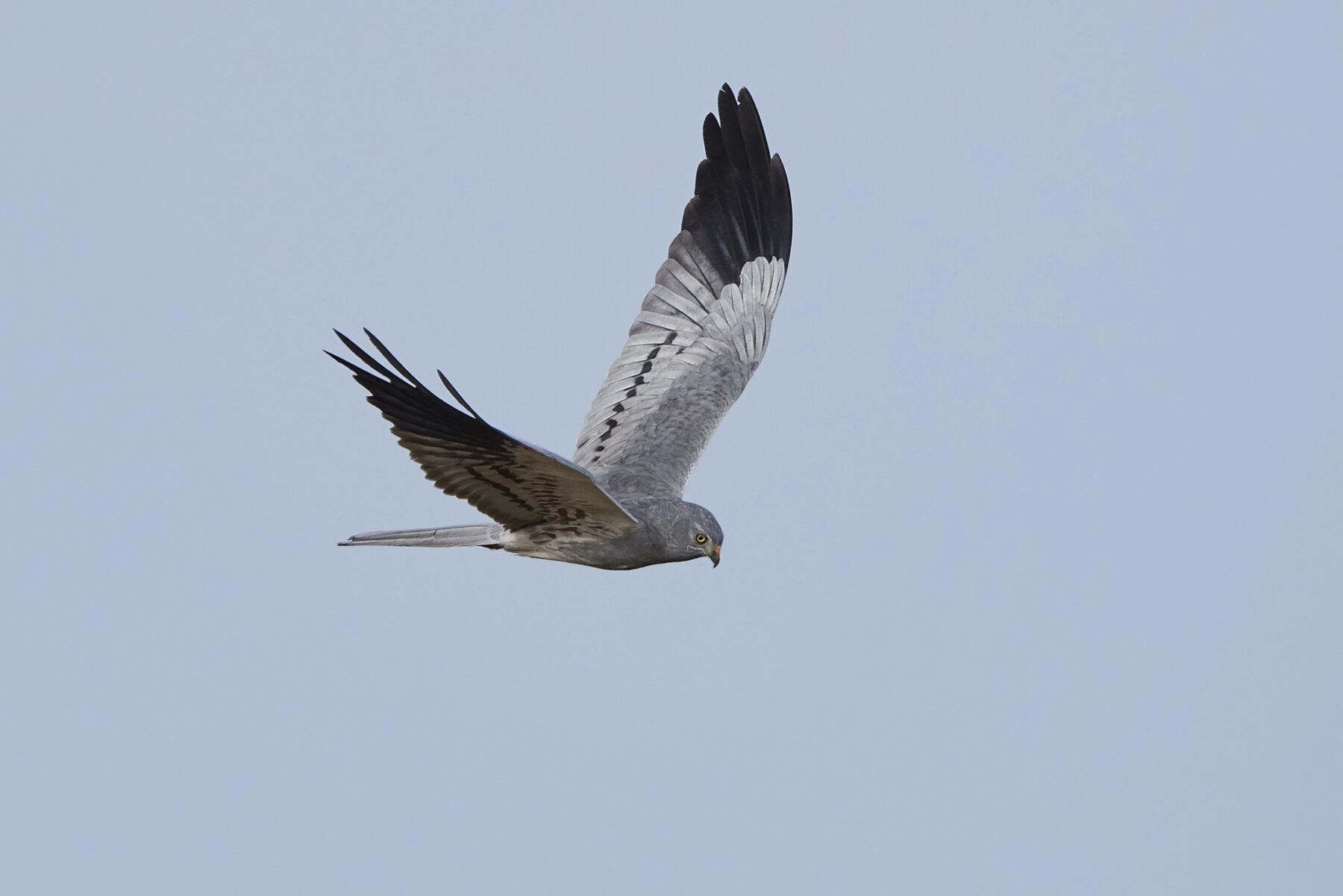He The Montagu harrier is a bird of prey It is medium sized and particularly slender in shape and is characterized by long, narrow and relatively pointed wings, a very long tail and long tarsi. Compared to the hen harrierwhich is slightly larger is more graceful and stylized.
The offspring of this migratory bird species make the reverse journey of their parents and return to the African continent to spend the winter. The radio transmitters installed in the chicks of the Montagu harriers, born in Andalusia, will allow their monitoring in real time.
The 756 chicks of the Montagu’s Harrier born this spring in Andalusia will begin their journey back to the countries south of the Sahara, where they will make a stopover depending on the state of the vegetation and the prey they find on their encounter path.. Morocco, Mali, Senegal and Burkina Faso are some of the countries that belong to the African continent where they will stay until they take the flight back to Andalusia when next spring arrives.
The technicians of the Ministry of Sustainability and the Environment indicate that thanks to the GPS-GSM devices with which many of them are equipped, although the signal from the transmitters is lost in some of these remote places, it is possible to monitor in time and observe the route of both the outward and return journey, as well as the stay in Africa, once they have returned to the Iberian Peninsula.
In this way, information is obtained on the impact on the population and how this affects recruitment for the next breeding season, i.e. the number of chicks that return to breed in Andalusia in subsequent years.

The conservation work of this migratory bird of prey, classified as ‘vulnerable’ according to the Andalusian Catalog and the Spanish Catalog of Endangered Species, has been carried out in the autonomous community since 2015, by an extensive human team that brings together professionals from the public and the region. private sectors, staff of the Organization of Environmental Agents, members of the Environment and Water Agency (AMAYA), field assistants, technical specialists and the staff of the Recovery Centers for Endangered Species (CREA), as well as environmental volunteers and cooperating entities of different nature.
Despite the challenges resulting from the problems the species has faced, thanks to the enormous efforts of these professionals, far from having been vulnerable, the Montagu’s Harrier has experienced a slight stabilization in the last two years, which means that he in 2024 Andalusia will have a total of 507 breeding pairs, 525 located nests and 756 fledged chicks.
These specimens are distributed throughout all Andalusian provinces, except Almería, where the species has not been found breeding since 2004.
The Montagu’s Harrier is the smallest of this species
He Montagu’s harrier It is a bird of prey of the order Accipitriformes, family Accipitridaeincluding eagles, vultures and harriers. It is the smallest of the species harriers present in the Spanish fauna. It is characterized by its slender silhouette, with long wings and tail.
The appearance depending on their gender is very striking. The adult male has a predominantly gray back, with a black line along the wings and with the tips of the wings in the same color. The usual ash color is derived from this, although sporadically we can find melanic ash, with practically black layers and others tending to white. The female has a brown color and the lower part of the wings has a very distinctive dark brown stripe, a feature it shares with the male. Juveniles have brown plumage above, similar to that of females, and reddish tones below.
These colors can make them fade when they are among natural grasslands or cereal crops, because it is there, on the bottom of these habitats, where the incubation, hatching and breeding of the chicks of this bird of prey takes place.
The Montagu’s Harrier is where it is born and where it hibernates.
Montagu’s harriers are a species with great flying ability. They are born in southern and central Europe and central Asia. In the Iberian Peninsula and of the fifteen autonomous communities it covers, Castilla-León, Extremadura and Andalusia are the places where a higher percentage of reproductive troops are located.
The International Union for Conservation of Nature (IUCN) calculate a number between 300,000-550,000 mature individuals in 2021 ( Handbook of the Birds of the World ) for this species worldwide and a declining population trend due to the loss of the area and quality of habitat of their campsites due to the change in land use and the treatments given to itamong others.
Juveniles and adults fly to the wintering range, which covers much of sub-Saharan Africa, the Indian subcontinent and Sri Lanka, from mid-July to September, a crucial phase that is currently little known given the breadth of its range. Currently, and thanks to the satellite and GPS-GSM transmitter markers installed over the last decade, attempts are being made to assess the effect that the threats they suffer there could have on their population dynamics.
Joining efforts for the conservation of the Montagu’s harrier
He Montagu’s harrier It uses agricultural areas for its reproduction. Since many of these spaces are privately owned, the direct relationship between the Administration and the owners is necessary, either to report on the presence of the species or to locate the nests, which are made on the ground and carried out by the grain can be run over. harvesters before the chicks leave the nest. Conservation measures for this species are laid down in the “Montagu’s harrier monitoring and protection program in Andalusia”, which has been implemented by the Ministry of Sustainability and the Environment since 2015.

